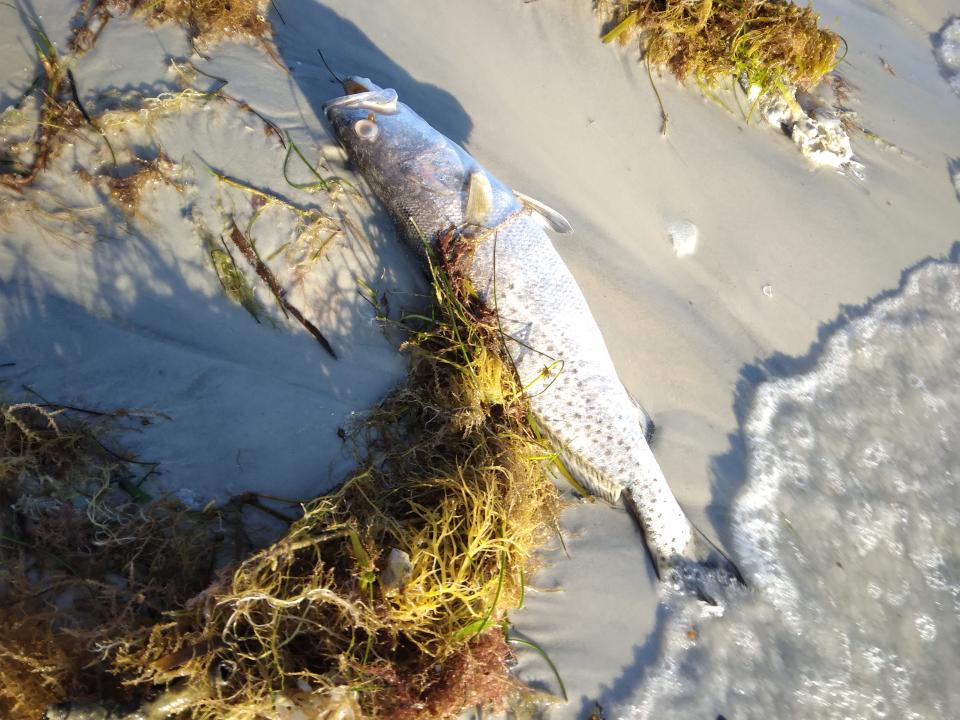Bold decisions needed to avert red tide disaster
As part of a barrier island community impacted by Hurricane Ian, the Sanibel Captiva Conservation Foundation (SCCF) has tirelessly worked with our neighbors toward recovery for five solid months. The physical restoration of our islands is well underway, with people returning to their homes and businesses starting to reopen. Unfortunately, the economic recovery continues to be stymied by an ongoing aftereffect of the storm — red tide.
As the storm surge from Hurricane Ian inundated our barrier islands and flooded our coastal communities the waters carried nutrient pollution from overstressed stormwater systems, septic tanks, neighborhoods and farmland into the Gulf of Mexico. While cleanup from the storm began, red tide bloomed.
Red tide is caused by a naturally occurring microscopic marine dinoflagellate, Karenia brevis. Provided the right water temperature and nutrient conditions, K. brevis can multiply quickly. The resulting harmful algal bloom produces brevetoxin in quantities large enough to cause mortality in marine life and severe respiratory irritation in humans. A landmark study by SCCF’s Marine Lab and the University of Florida has confirmed that the introduction of man-made nutrients into the system can increase the intensity and duration of a bloom.
Since the first fish kill, the bloom has grown. The mullet that washed ashore in November have now been joined by goliath grouper, cobia, and tarpon — a sign that the red tide is moving between trophic levels. Coughing fits and the smell of dead fish drive residents and tourists from our coastal areas, causing further damage to our already battered tourism-based economy. Without being able to safely open our beaches and enjoy our waters, we cannot rebuild our economy.
Florida red tide map: See current status

In the rush to "solve" red tide, a large amount of funding has been earmarked for innovative mitigation strategies. While the prospect of new technology is exciting, our communities cannot wait. The most effective way to mitigate a red tide bloom is to prevent the polluted water from entering our waterways. Individuals can help to lower their impact on water quality by restricting water use and limiting fertilizer application, but the problem is larger than any one person.
Water managers must make difficult decisions to respond to red tide bloom conditions. The Caloosahatchee has been receiving discharges from Lake Okeechobee since late October, most of which have been in the "optimal" range. However, the metrics used do not consider the exacerbating effect that these nutrient-filled waters can have on a bloom. It’s the responsibility of the Army Corps of Engineers and the South Florida Water Management District to minimize the impacts to the communities they serve and find places for this water to go. They cannot sacrifice one stakeholder for the benefit of another.
There are no easy solutions. While releasing nutrient-filled water can intensify a bloom, managers must also contend with a lake that is still high from Ian and Nicole, similar to the situation in 2018 in the aftermath of Hurricane Irma. If the lake doesn’t come down before the beginning of the wet season, it will likely require damaging discharges to be flushed down the Caloosahatchee and St. Lucie rivers, to their detriment. Such discharges could further fuel the ongoing red tide and create a repeat of the toxic summer of 2018.
Our communities in Southwest Florida have been suffering. The road to recovery has been long and arduous and it is imperative that we stop this red tide before it grows out of control. The future of our coastal communities depends on restoring the Everglades and increasing water storage and treatment capacity within the Caloosahatchee watershed.
Until we can send more clean water south, all stakeholders need to take their share of excess water from Lake Okeechobee. An equitable distribution of water requires that we all share some of the burden as well as the benefit.
Matt DePaolis is Sanibel Captiva Conservation Foundation environmental policy director.
This article originally appeared on Fort Myers News-Press: Bold decisions needed to avert red tide disaster

